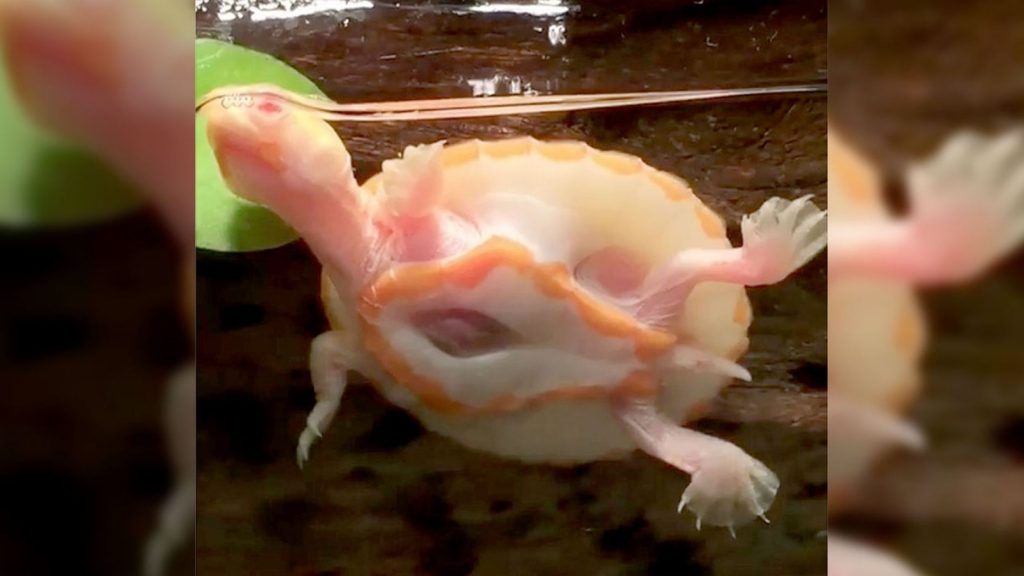
Baby Turtle with Exposed Heart
While the turtle’s condition is unfamiliar in the veterinary world, the world of human medicine deals with a similar condition. One in every 126,000 babies is born with a condition known as ectopia cordis. Like the baby turtle, these infants emerge with a portion of their hearts exposed. Note that there are several places the heart could end up in such scenarios. These include the abdomen, the chest, or even the neck. The chest is the most common location, and the heart usually protrudes through a split.
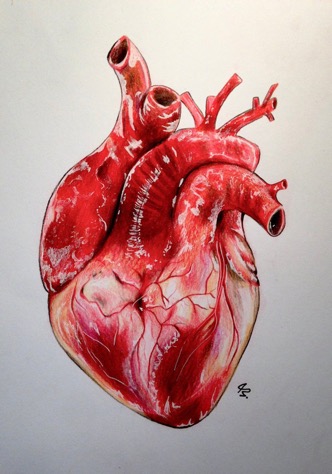
Human Heart Model
Sometimes a name says a million words, and this turtle is the story of her name. In humans, the condition is known to be life threatening, and survival can be a real struggle. Therefore, such a frail turtle was never expected to live very long. However, the turtle, which was aptly named “Hope,” has been living on despite the odds being against here. There’s not much information surrounding the reason for her name, but she is a beacon of hope for all who feel as if survival is not an option.
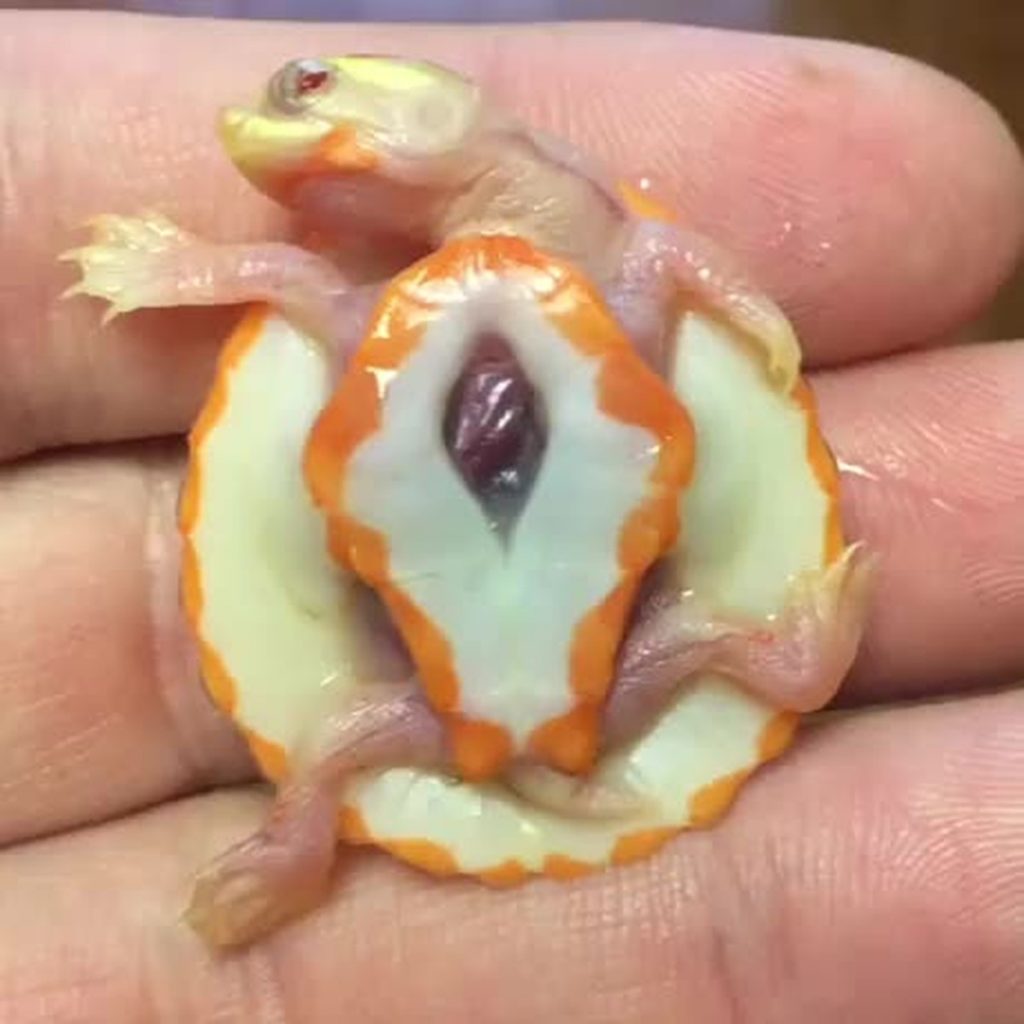
Hope, The Baby Turtle
Hope is currently owned and cared for by Michael Aquilina, who is a New Jersey Resident. He is known as Aquamike23 on Instagram and shares snippets of his life with Hope. While he cares for the turtle and ensures that her needs are met, he has let off that he is a bit scared for her sometimes. This is because she is so small and vulnerable while he is quite a big guy. You can tell from his speech that he deeply cares for her.
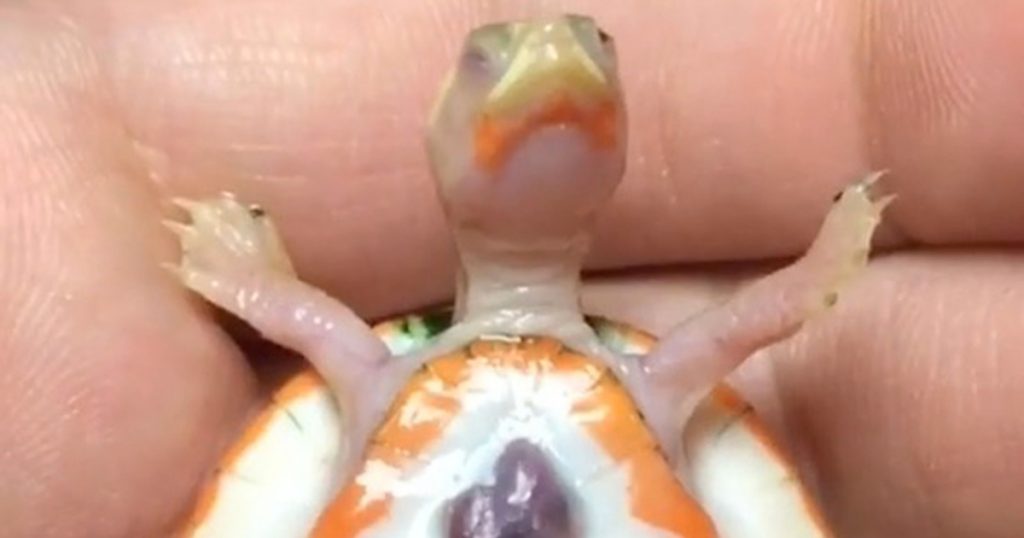
Mike Holding Hope
Mike is a very gentle big guy, and you can see the love he demonstrates in every interaction with hope. It is no surprise then that he was chosen to be Hope’s owner. Mike adopted Hope from a friend at a pet store, who felt like the turtle needed a caring home, as opposed to being sold for profit. Mike was selected as his friend believed that he had the heart, the experience, and the passion to adequately care for Hope.
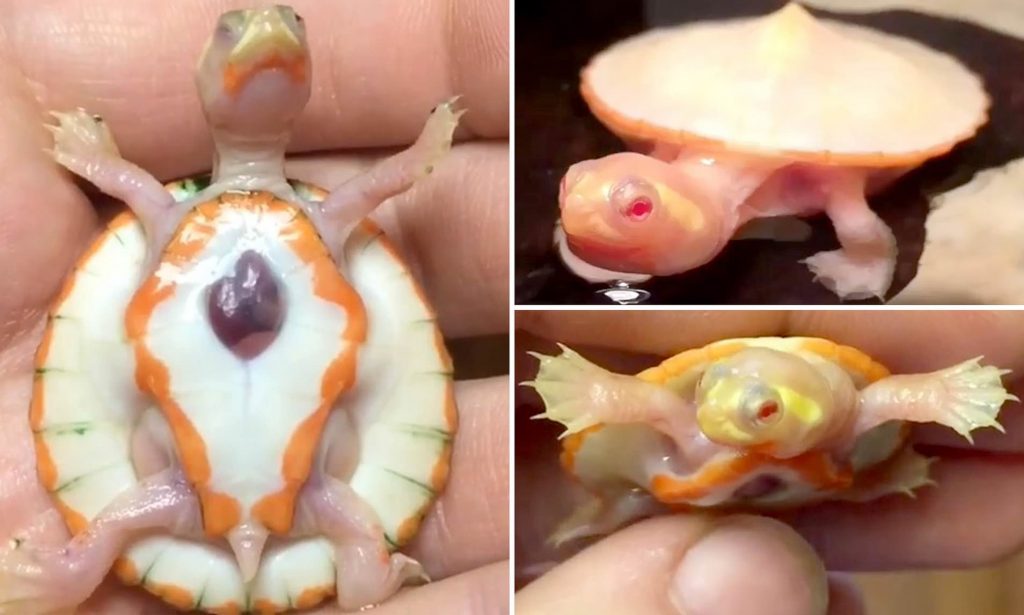
Mike And Hope
Mike has stated that one of Hope’s favorite past times is eating, and she gets super excited about it. Since she is so frail, and he does not want to cause her any harm, he feeds her with tongs. According to Mike, Hope can tell when it is time for dinner, as she runs to a specific corner in her aquarium where she knows she usually gets food. Once there, she perks up and waits for him to hand her a tasty snack.
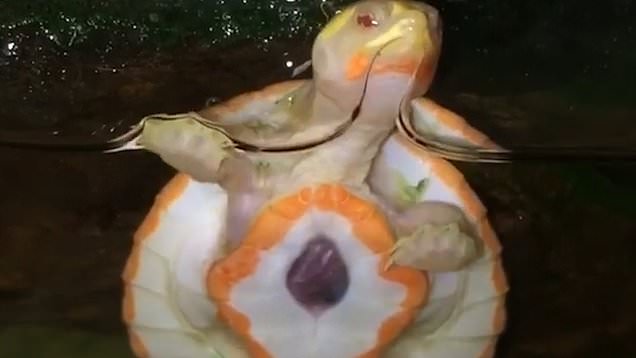
Hope Perking Up
Mike says that he and Hope have established a strong bond in the time he has been taking care of her. To no one’s surprise, he feels like they do their bonding most when he’s feeding her. Apart from just the food, Hope has become sensitive to Hope’s patterns. Not only does she react when he puts his face against her aquarium, but she also reacts to his getting home. She continues to grow and thrive, and it’s as if she’s expressing gratitude to him for it.
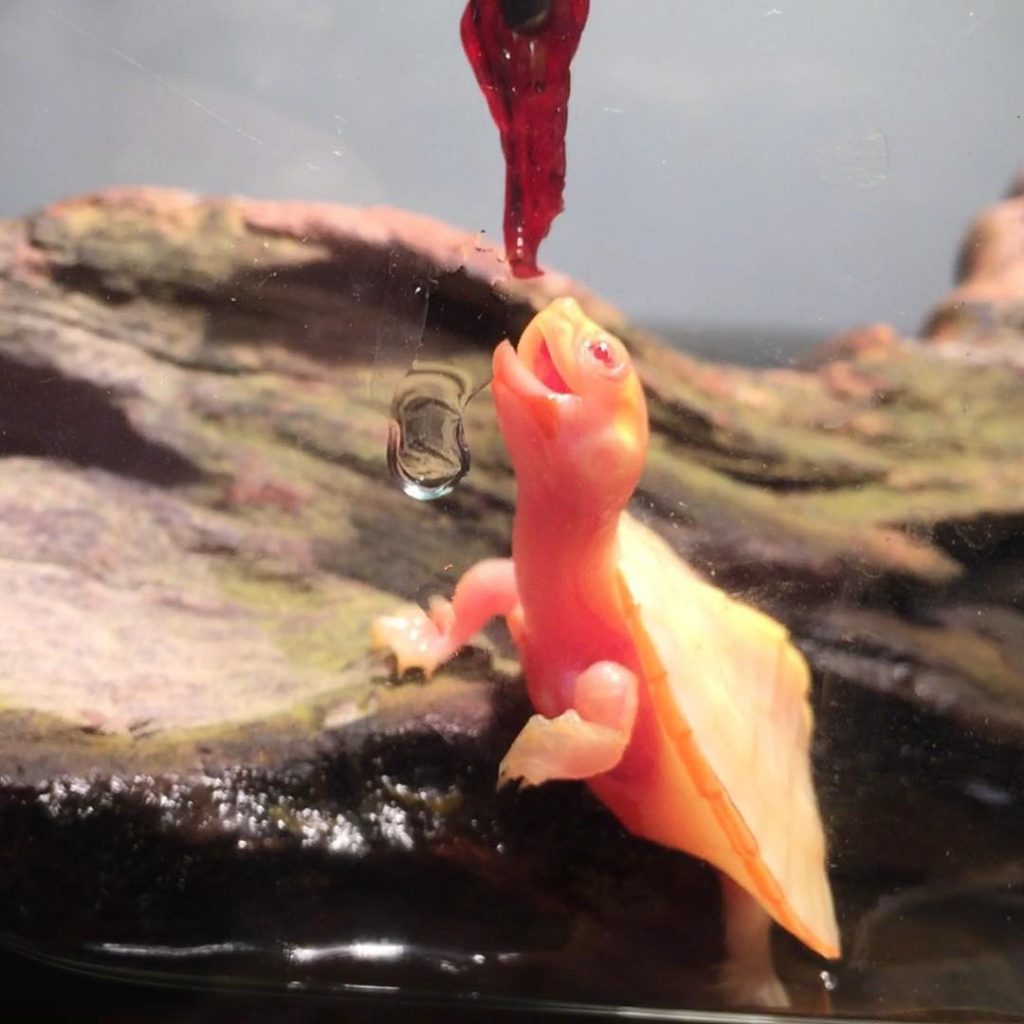
Mike Feeding Hope
There are pictures and videos available that depict just how Hope’s heart looks and behaves. Mike likens the look of her heart to that of a raisin. To him, as the heart beats, it looks as if there is a raisin that lies beneath a piece of gum. This “raisin” seems as if it is trying to inflate itself but is being prevented by some external force. The color and shape of Hope’s heart, plus the look it has in motion, are clear indicators of why Mike has this perception.
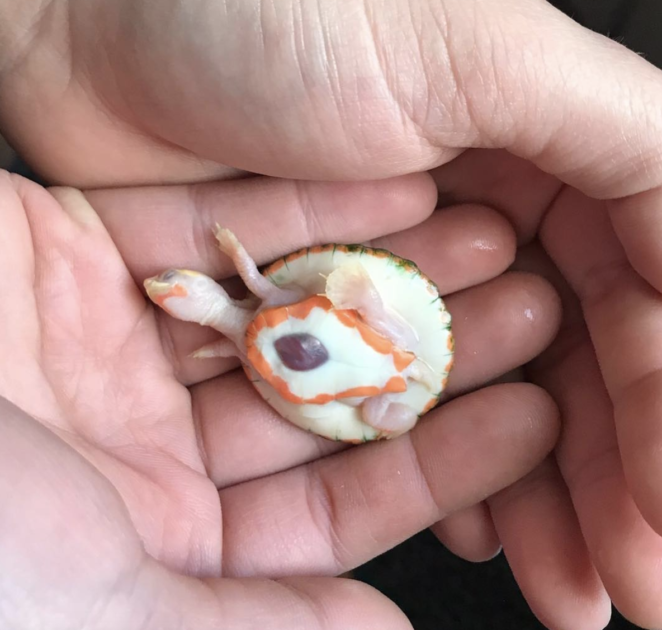
Hope’s Heart
Human infants with the condition don’t have a very stellar survival rate. Despite this, Hope has managed to thrive, and Mike is doing everything he can. He has expressed that he wants the turtle to live a happy, healthy life, and so he creates a sterile environment to protect her immune system and heart. This involves keeping her away from other turtles, which he plans to do for the foreseeable future. A vet advised Mike that as time goes on and Hope grows, he shouldn’t expect the size of the hole in her underbelly to change.
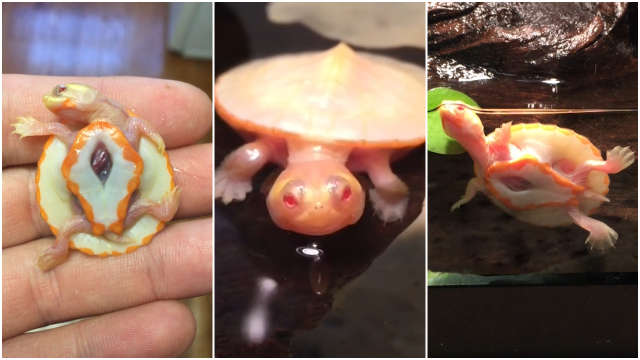
Hope Swimming Around
Many people have fallen in love with Hope and have, therefore, started following Mike. He posts frequent updates about Hope and various pictures and videos with her doing any number of things. It also helps his follower base to get a feel for the dynamic between him and the turtle. If you don’t want to miss a beat where Hope is concerned, feel free to join the club. You can find Mike’s page on Instagram at Aquamike23 if you want to stay in the loop.

Michael’s Instagram Page “aquamike23”
Many people wonder what the difference is between a tortoise and a turtle. Even you may have seen a tortoise and made the “mistake” of calling it a turtle. What is a tortoise, though? The truth is, a tortoise is a type of turtle. Tortoises fall in the Testudines or Chelonia order, which means that they are all turtles. They are different in the sense that they’re exclusively land wanderers, they have a special diet, and they have a few unique aesthetic features. However, you’re not wrong for saying “turtle.”
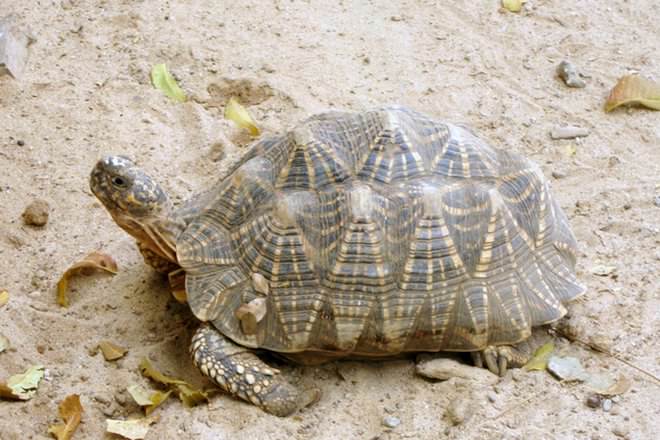
Tortoise Or Turtle?
Back in the 1980s, India’s government realized that there was a pollution issue after cremations were performed on the banks of the Ganges River. The corpses were usually dumped into it after, but they didn’t always completely burn. Additionally, corpses were thrown in unburnt when people couldn’t afford to do the cremation. To solve this, the government bred a special set of turtles with a taste for the flesh of the dead and released them into the river. The $32 million plan failed after the turtles were hunted and killed for meat.
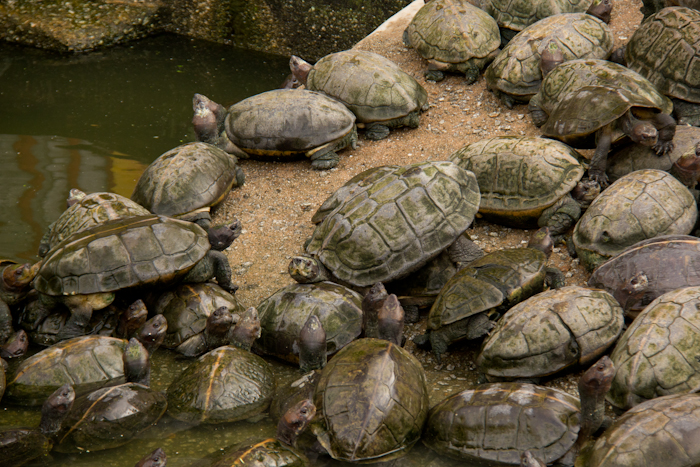
A Group Of Turtles
In the Peruvian rainforest, researchers found that butterflies were drinking the tears of turtles, in the search for sodium. In southeastern Peru, all the rain comes from the Atlantic side. Since it travels all the way across South America, it is nutrient depleted. Butterflies, in addition to other creatures, seek alternative salt sources as their bodies need it to be properly regulated. Herbivores have a lower natural sodium level than other animals. Therefore, the butterflies get their fix by drinking the tears of turtles in the forest.
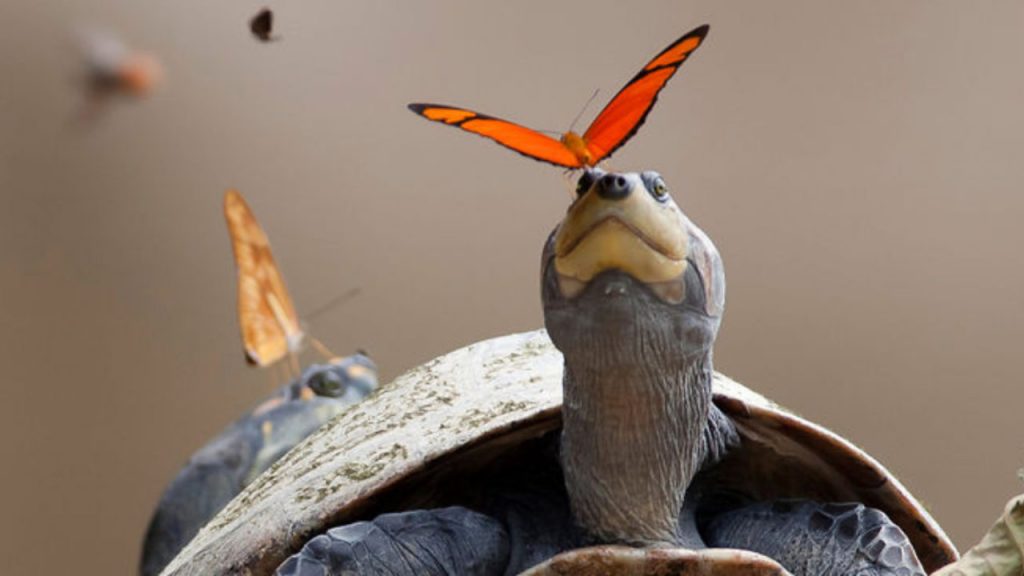
Butterfly Drinking Turtle Tears
Turtles get their own special day annually. May 23 is hailed as “World Turtle Day.” The idea is for people to pay attention to, learn about, and have increased respect for both turtles and tortoises. This is and has been sponsored by the American Tortoise Rescue since 2000. It was born out of the belief that increased human action can go a long way in the survival and thriving of turtles. People around the world celebrate in unique ways, such as wearing turtle costumes.
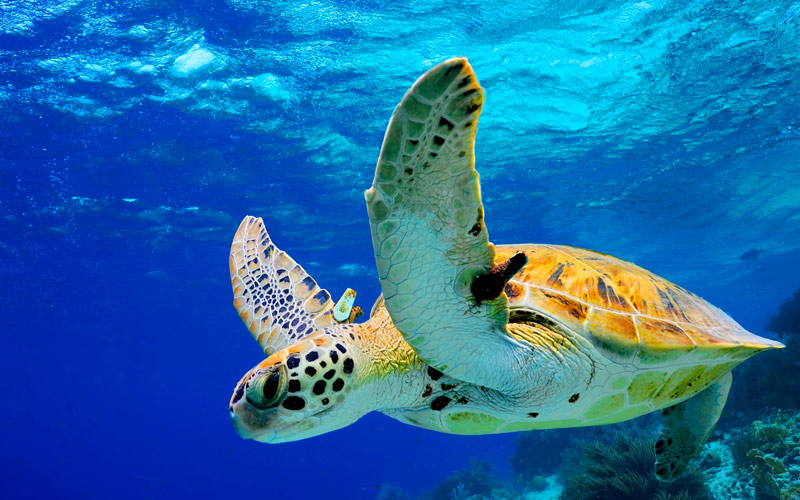
A Turtle Swimming Around
The Asian Softshell Turtle sees the world for only five percent of its lifetime. This is because it spends the other 95% unseen. These turtles are found in river sand, and when they seem to disappear, they are submerged under said sand. Additionally, they stay there motionless, so it’s hard to tell that they are even present. Twice a day, these turtles come to the surface to take a breath, and this is the only time they can be seen.
The Buried Softshell Turtle
The Asian Softshell Turtle sees the world for only five percent of its lifetime. This is because it spends the other 95% unseen. These turtles are found in river sand, and when they seem to disappear, they are submerged under said sand. Additionally, they stay there motionless, so it’s hard to tell that they are even present. Twice a day, these turtles come to the surface to take a breath, and this is the only time they can be seen.
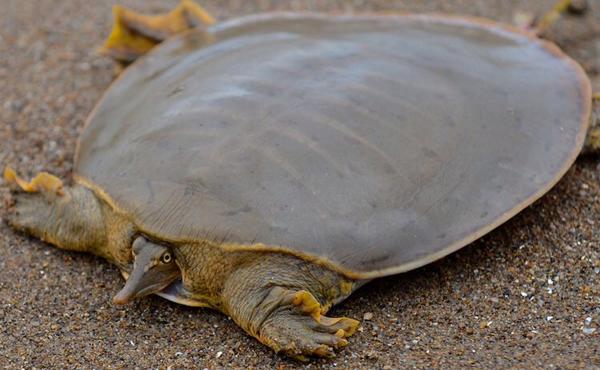
Asian Softshell Turtle
Turtles can do some amazing things, and one of them is the ability to breathe through their hind ends. Different turtles can do this to different degrees, and some do not do it at all. Sitting elsewhere on the spectrum is the Rheodytes Leukops turtle, which breathes in most of its air this way. These turtles can take in 68% of their air requirements via the cloacal bursae. This means that they do not breathe in a traditional manner, and they rarely need to surface for air.
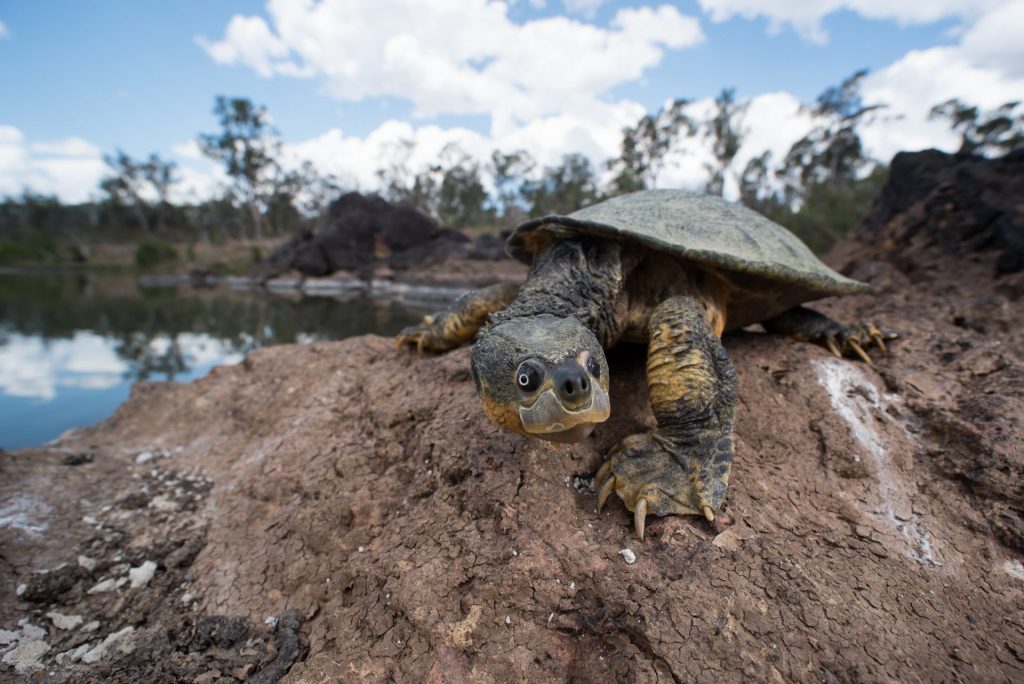
Rheodytes Leukops
Jurassic Park might have gotten an R rating if the sources of some of the movie’s sounds were a factor. Gary Rydstrom, the sound designer of the popular 1993 movie, was tasked with creating something special from the unknown. Seriously, who knew what dinosaurs sounded like? The sounds made by the velociraptors are some of the most recognizable from the production. However, Rydstrom revealed that these were captured from mating turtles. Of course, the sound recordings were altered to sound more like an animal cry.
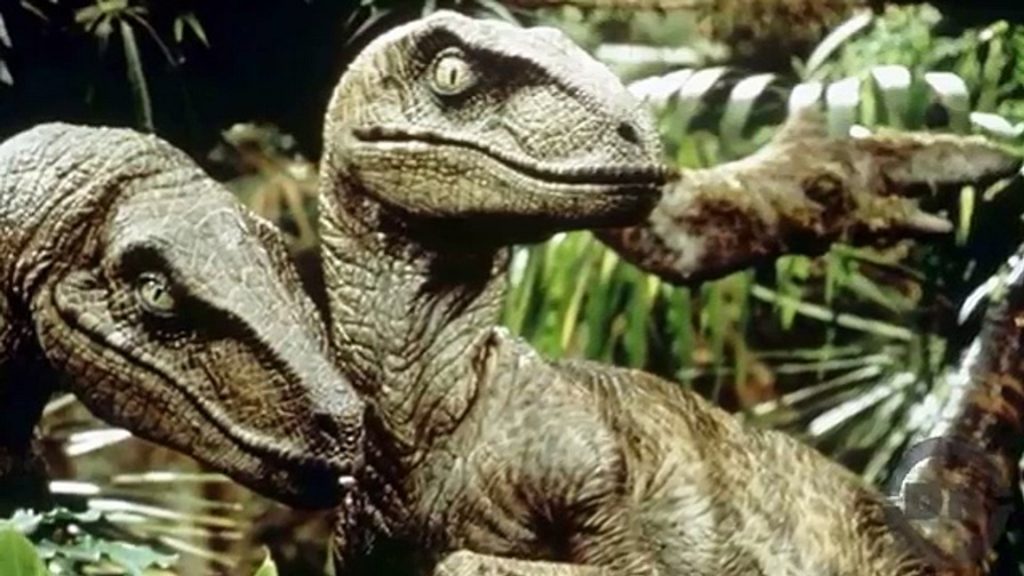
Velociraptors
The International Classification of Diseases (ICD) is used by numerous medical coding companies. It is the standard diagnostic tool in this regard. The current revision in effect is ICD-10, and the codes within are used for monitoring of the occurrence and frequency of various health concerns. Even with this level of significance, ICD-10 manages to be hilarious in many respects with some of the codes that are listed. One of the funniest is W5922XA, which is the code for “Struck by turtle, initial encounter.”

A List of some ICD-10 Codes
Turtles fall under the “Four-inch regulation” or the “Four-inch law” in the United States. This means that pet turtles cannot have a carapace with a length of fewer than four inches. The FDA announced the regulation back in 1975. The reason cited for its introduction is the effect of salmonellosis, which is turtle associated. Children were reported to be putting small turtles in their mouths. The regulation ensures that the size of pet turtles is just large enough to discourage and prevent this practice.
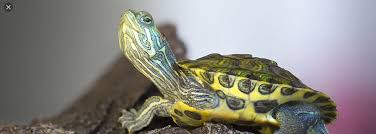
Close Up Of A Turtle
This species gets its name from its behavior of shooting out its head and snapping its jaws. They have highly flexible necks, which allow their heads to go as far as to their hind legs. This is the reason that it is not safe to pick up these turtles from certain angles. It is believed that the snapping behavior is a defense mechanism that developed from the evolution process. These turtles are too big to hide in their shells and, so they have this alternative.

Snapping Turtle
Turtles are known for having immense staying power compared to a lot of animals. In fact, some people believe that they could live forever if they were not killed by disease or being crushed. This is because turtles do not die of old age as other animals do. This is because a turtle doesn’t change much internally with time. This is the reason that its internal organs, such as its liver, look almost identical at the adolescent stage as they do much later in life.
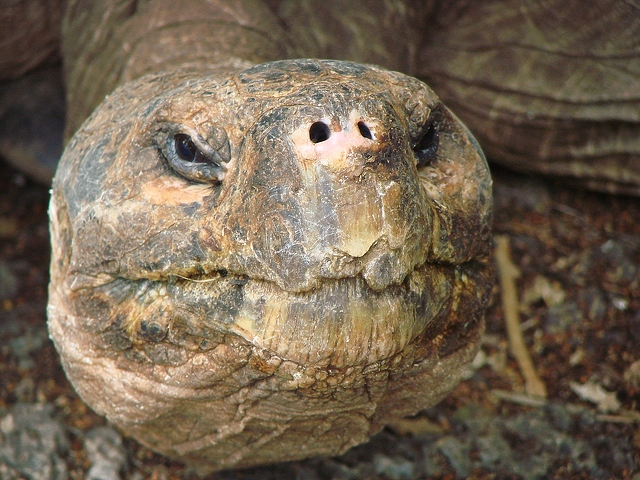
An Old Turtle
When you think of things that look similar in the animal kingdom, turtle shells and insect wings probably do not strike you as the most obvious pairing. However, there is a similarity there that you may not have noticed. On a turtle’s shell, you can see regular hexagons in the center. These are bound by pentagons, which fuse to give a uniformed look to the shell’s edge. Insect wings also have this feature, which gives them the same kind of look.
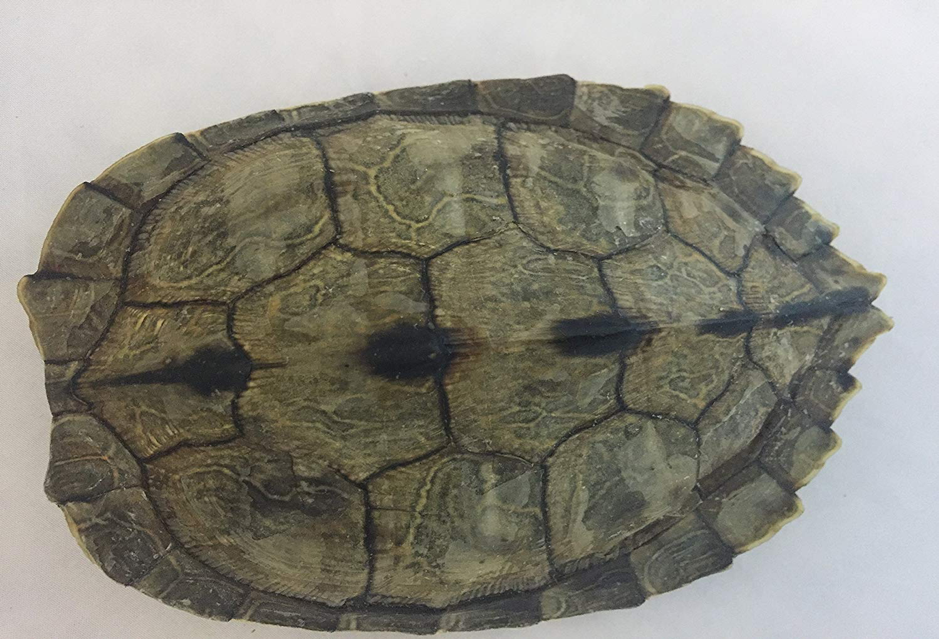
Turtle Shell
A turtle’s diet is heavily influenced by its type and where it resides. Wild turtles, for example, need a lot of protein, which means that they eat a diet that is rich in it. This consists of plants that grow in water, dead marine animals, and small insects. Turtles aren’t omnivorous from the get-go. Typically, they begin their lives as carnivores and, they acquire the taste for plants and vegetation during their aging process. There are exceptions, such as the green sea turtle, which is a herbivore.
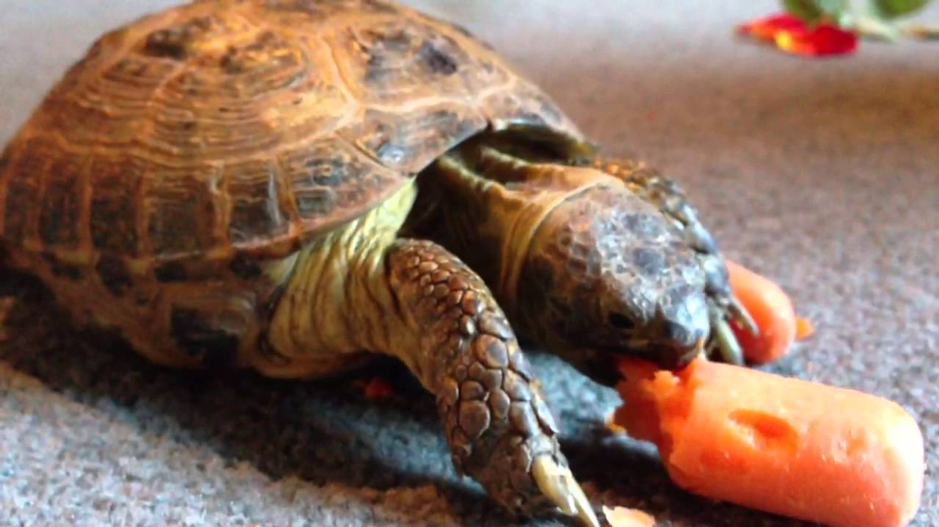
A Turtle Having Some Food
Contrary to popular belief, a turtle doesn’t wear a shell. In fact, the shell is a part of the turtle’s spine. It is a very complex shield for the dorsal and ventral areas of a turtle. It is comprised of bony elements like any other spine; however, they are modified. It encloses the turtle’s vital organs and even its head in some cases. There are both dermal and skeletal bones present in the shell, which is believed to be a result of evolution.
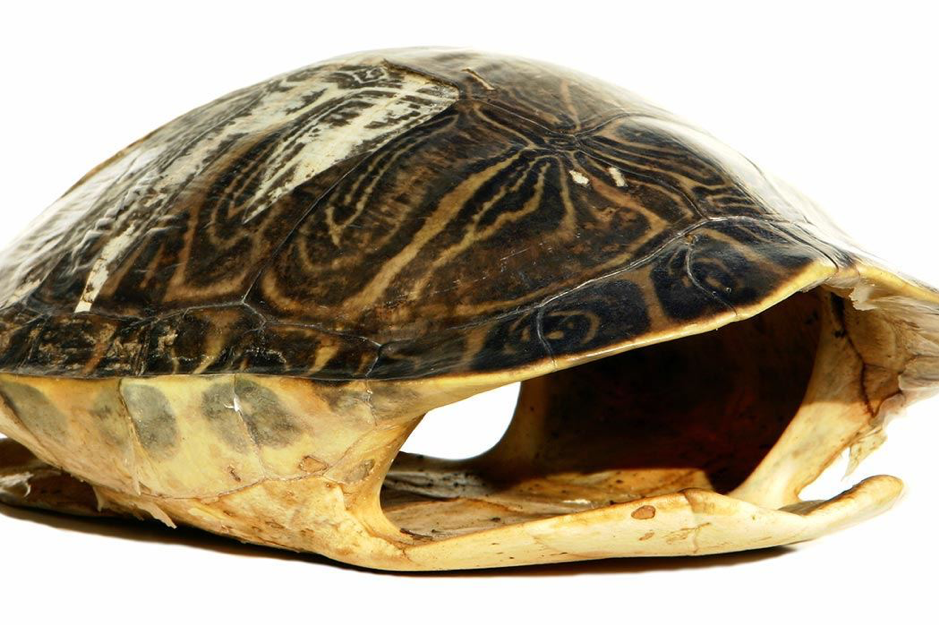
An Isolated Turtle Shell
There are many processes that go into determining the sex of a human infant. However, the temperature is not known for being one of these. Turtles are a different case entirely. The egg’s temperature of incubation is the determining factor for most turtles. Even a small change in this temperature can change the sex ratio. If eggs are incubated above 31 degrees Celsius, all the turtles emerge as females. If they are incubated below 28 degrees Celsius, they all emerge as males.

Male And Female Gender Symbols
When you look at a turtle, you may assume that snakes and lizards are more closely related to it than something like birds. Surprisingly, however, the reverse is true. A turtle falls under the category of Archosauromorpha. These are a clade of diapsid reptiles that are more closely related to archosaurs such as dinosaurs and birds than they are to lepidosaurs such as lizards and snakes. While the clade is very diverse, there are several shared characteristics such as those related to vertebrae that unify them.
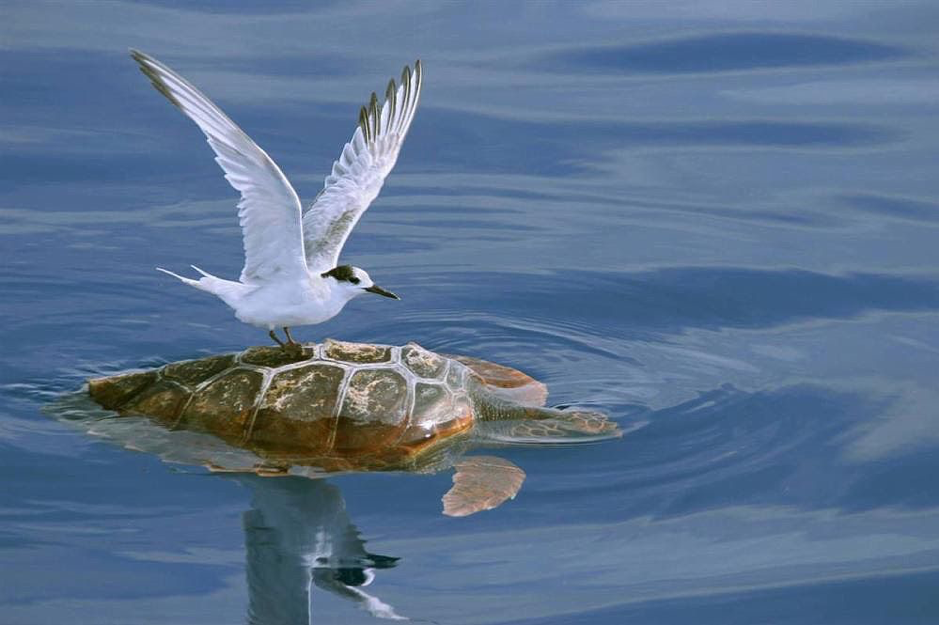
Sea Gull Atop A Turtle
The painted turtle has a most peculiar method of matchmaking. As with many other species, the male turtles seek out the female turtles. However, mate selection is done with a tickling custom. These turtles have long claws on both their front legs and their hind legs. The male painted turtle uses these long claws to tickle a female’s head during the mating season. If the female is interested, she allows the tickling to occur and then sinks to the pond floor where mating can commence.
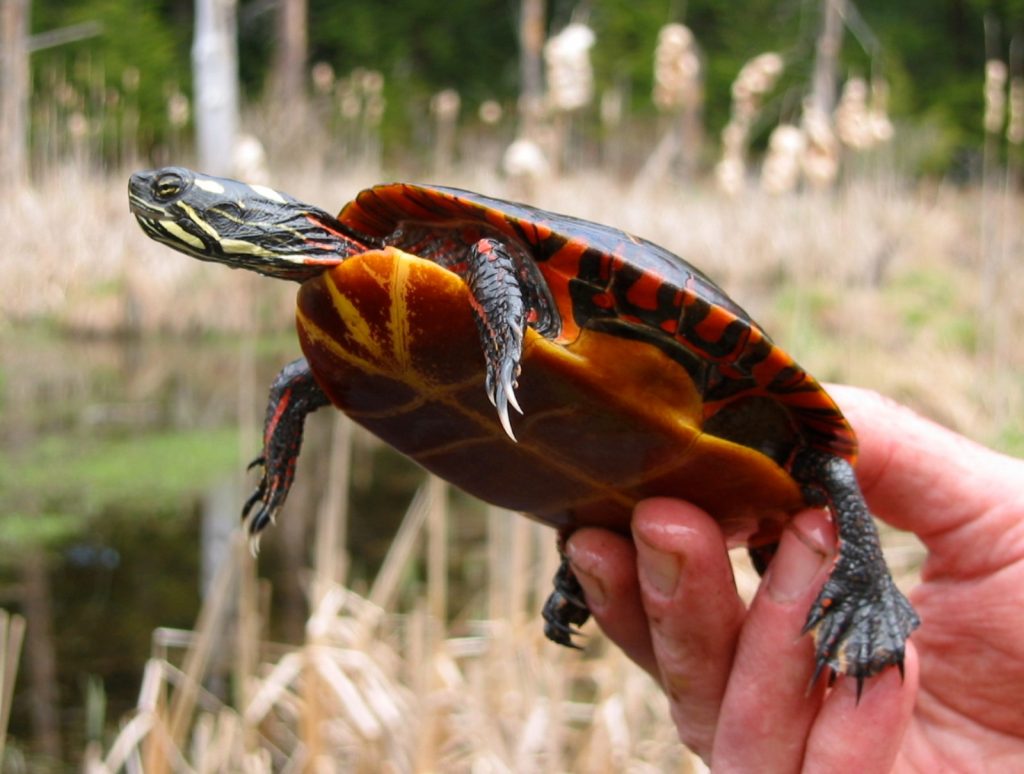
Painted Turtle
There are many innovative keychain designs, but how many are there that use live turtles as a part of said design? In China, people walk around with live keychains in sealed plastic containers with water. These strange souvenirs are a weird spin on the term “pocket pets.” Apparently, Chinese vendors have been selling these “trinkets” for years. Turtles are not the only animals that are found in these keychains. Fish, frogs, and salamanders are also sometimes put in the containers as well.
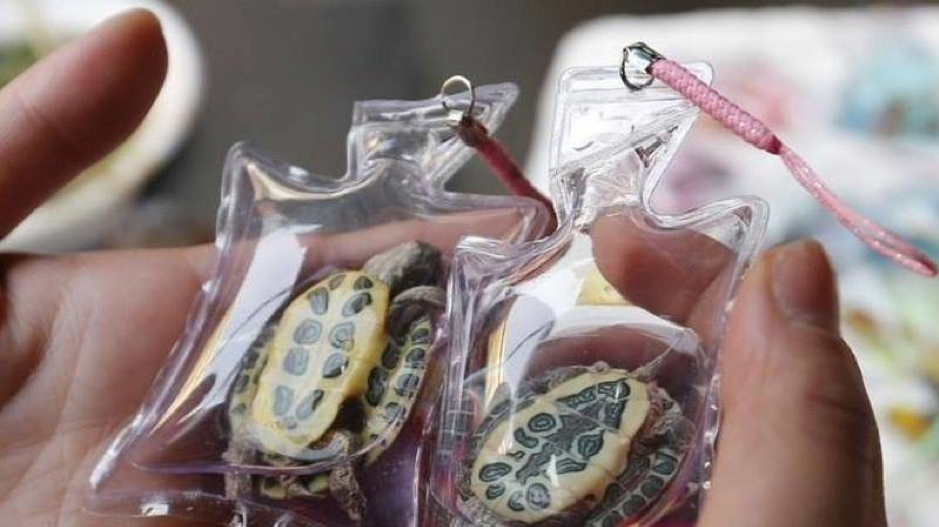
Chinese Keychains
While turtles are known for swimming or walking around on land, they are not known for being amazing tree climbers. While this does not apply to all species, there are some that climb trees surprisingly well. Common musk turtles are some of the known climbers in this regard. They tend to rest in very high trees, which means an innate ability to climb is needed to get there. There are many images and videos around of turtles doing their climbing, and it’s a marvel to see if you haven’t.
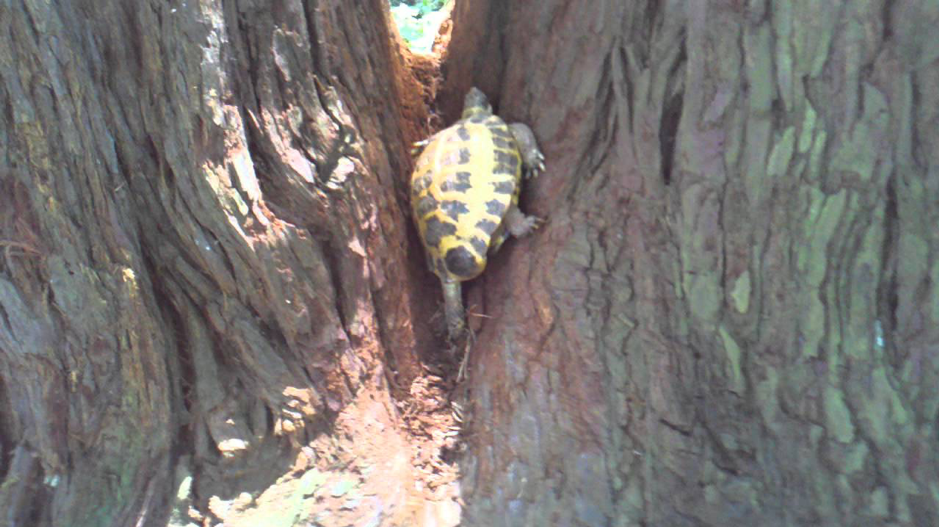
Tortoise Climbing A Tree
Many turtles hibernate underwater during winter. They stay there for months, and while there, they can breathe through their tails. Hibernation is an integral part of the life of many turtles because of their habitats. It is characterized by low temperature, inactivity, metabolic slowness, etc. In winter conditions, food becomes less available for turtles, as well as other animals. Therefore, they cannot acquire the normal amount of energy from food that they usually do. By going into hibernation, they conserve energy and require less food.

Turtle Exiting Hibernation
Turtles have the honor of being a part of the very first successful USSR circumlunar mission. The mission took place using a spacecraft known as Zond 5, which was a part of the Soviet Zond program. The spacecraft was sent out on a research mission to arrive at and circle the moon. It then needed to return to Earth safely. While this was the second spaceship to do this, it was the first to include terrestrial life. This included tortoises, plants, and fruit fly eggs.
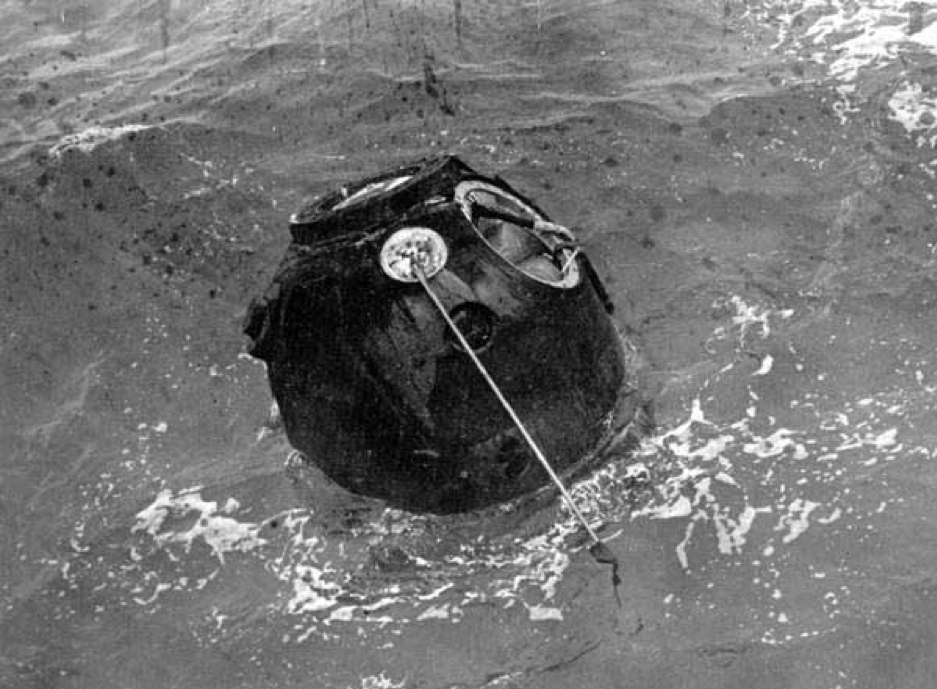
Zond 5 Vessel
The oldest recorded fossilized vertebrae copulating fossil consists of a pair of turtles during mating. Researchers say that based on their findings, it seems that the turtles may have been caught in some sort of deathtrap during their mating activity. It is speculated that the fossil is about 50 million years old. The fossil was discovered at Germany’s Messel Pit, which used to be a volcanic crater. Volcanic gases have been cited as the potential reason for the passing of the turtles.
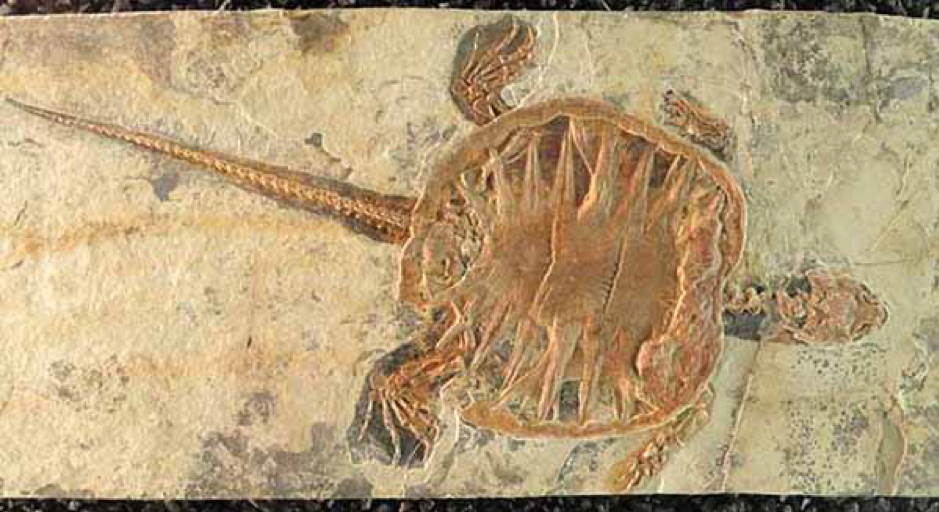
Turtle Fossil
Turtles come in numerous shapes and sizes, which is why it is no surprise that there are some very large ones around. The leatherback sea turtle is the heaviest of them all. They can measure anywhere from 4.5 to 5.5 feet, and they can weigh anywhere from 600 to 1500 lbs. While the leatherback turtle is the heaviest, they are not necessarily the longest. The Galapagos tortoise, while no more than 600 lbs., can grow to be up to six feet tall.
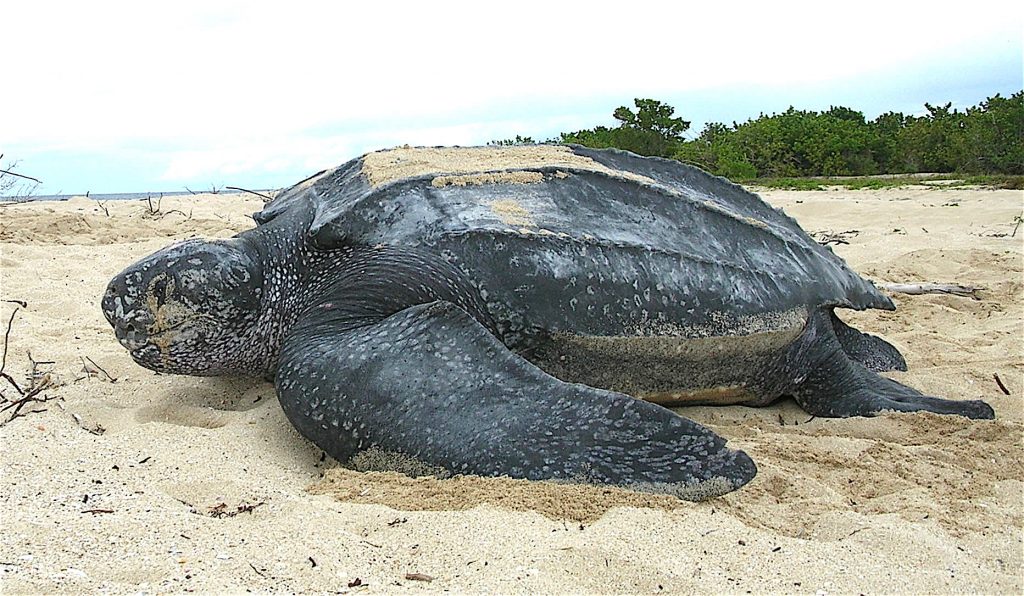
Leatherback Sea Turtle
Turtles are so unassuming and slow that people believe that they are also quiet. However, this could not be any further from the truth. Turtles are quite noisy. It is possible that you have even heard a turtle without realizing that it is one. Some turtles sound like people belching, others sound like barking dogs, while others sound like motors. The South American red-footed tortoise is notorious for its sound as it sounds so much like a chicken, that making a distinction is difficult.
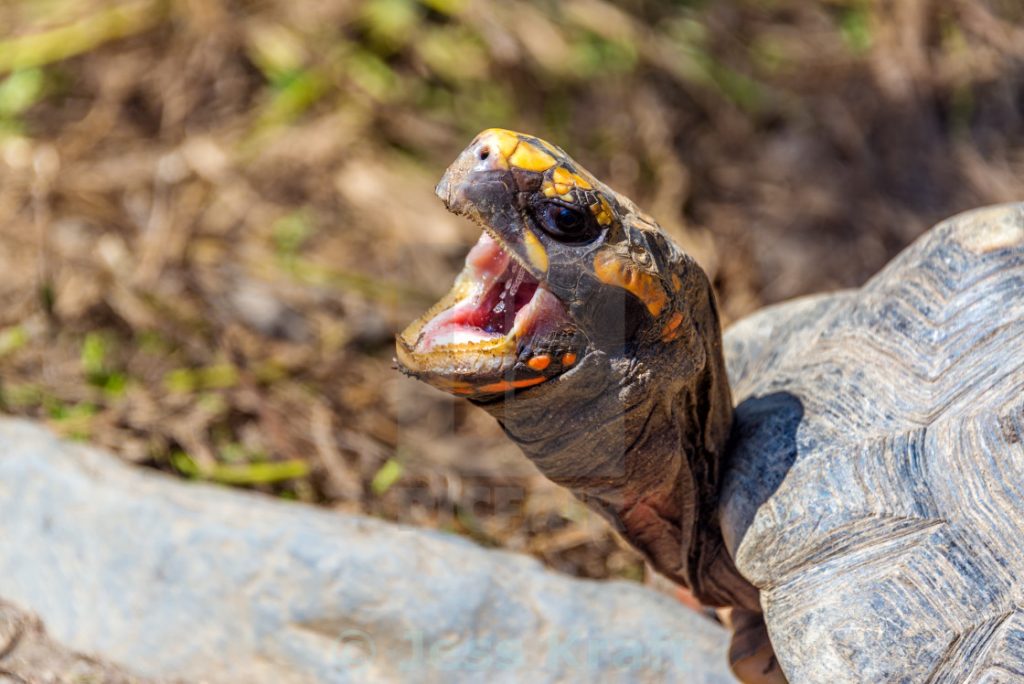
Turtle Open Mouth
Turtles do not seem like an anti-social creature, but they can be depending on the situation. Gatherings of turtles look very social, which gives people the wrong idea. The truth is, turtles do not have an issue being around other turtles. However, they do not interact much. This is made even worse when other animals are put into the equation. Turtles may just ignore them entirely. While they are slow, they are active creatures and spend their time foraging for food instead of interacting.
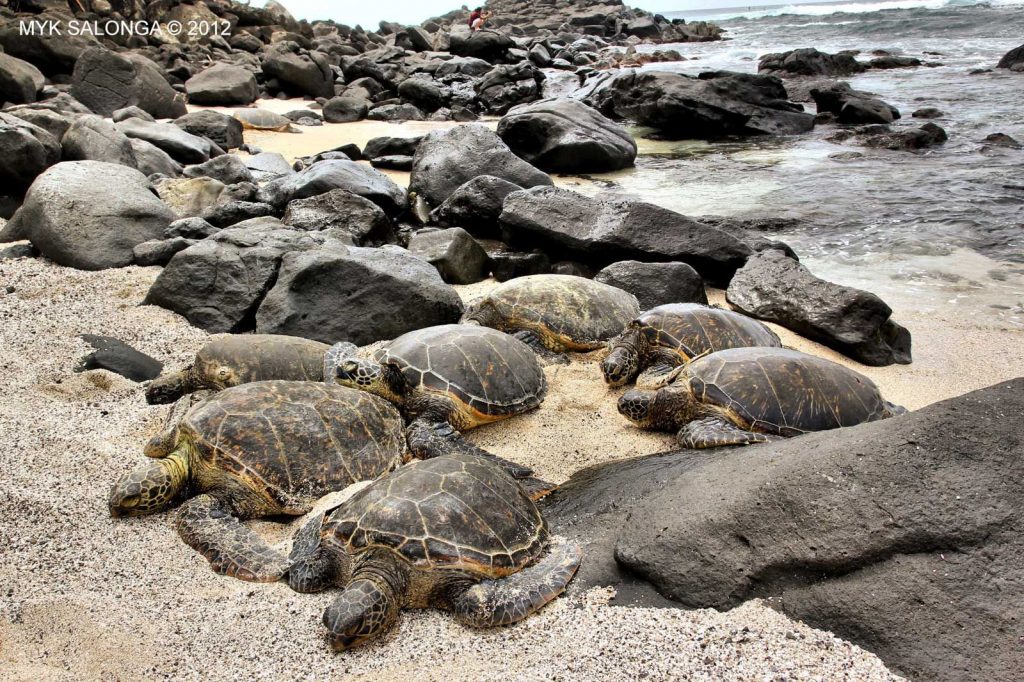
Group Of Turtles
Turtles are not the most attentive of parents to their young. In fact, they aren’t attentive at all. When mating is completed, the females tend to find a suitable place on land for egg-laying. This is usually in sand or dirt. A nest is usually dug, followed by the laying of the eggs. This is the most the female does in the way of nurturing. There are no species of turtle that engage in the nurturing of their young.
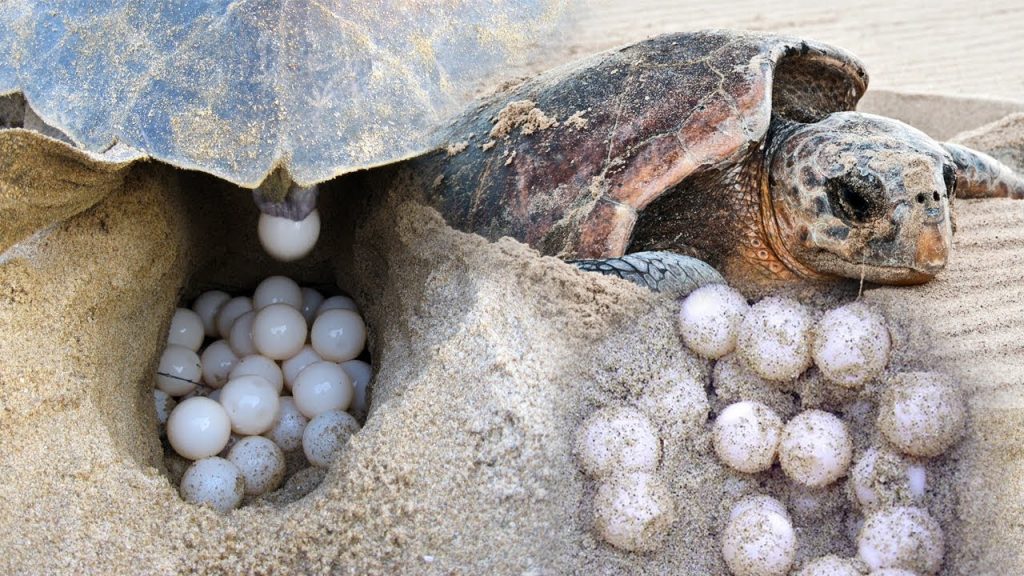
Sea Turtle Eggs
Turtles are believed to have been around for over 120 million years. If nothing else, this proves that turtles are a constant, especially when you consider that the turtles of ancient times are not much different from those of today. Be that as it may, the International Union for Conservation of Nature (IUCN) has listed various species of turtles as critically endangered, endangered, or threatened. The ploughshare tortoise and the radiated tortoise are among those in this category, as predictions say they may be extinct within 45 years.
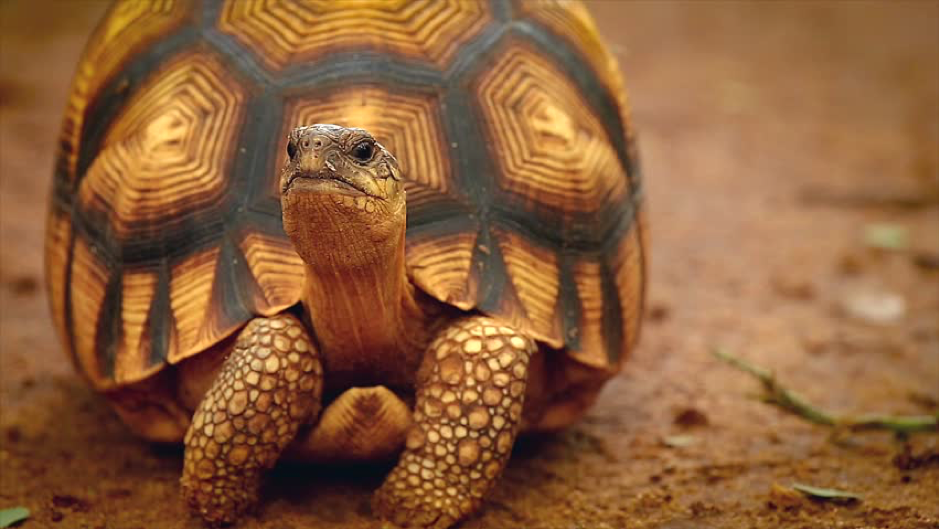
Ploughshare Tortoise
There is a popular belief that a turtle can get too big for its shell. When this happens, it is said that the turtle leaves its shell. Many people believe that this is the process that leads to the acquiring of empty turtle shells. First, the shell is not something the turtle wears. The shell is a part of the turtle’s skeletal system. As a turtle’s body grows, the turtle’s shell grows as well. This makes it impossible for the shell to be outgrown by the turtle.
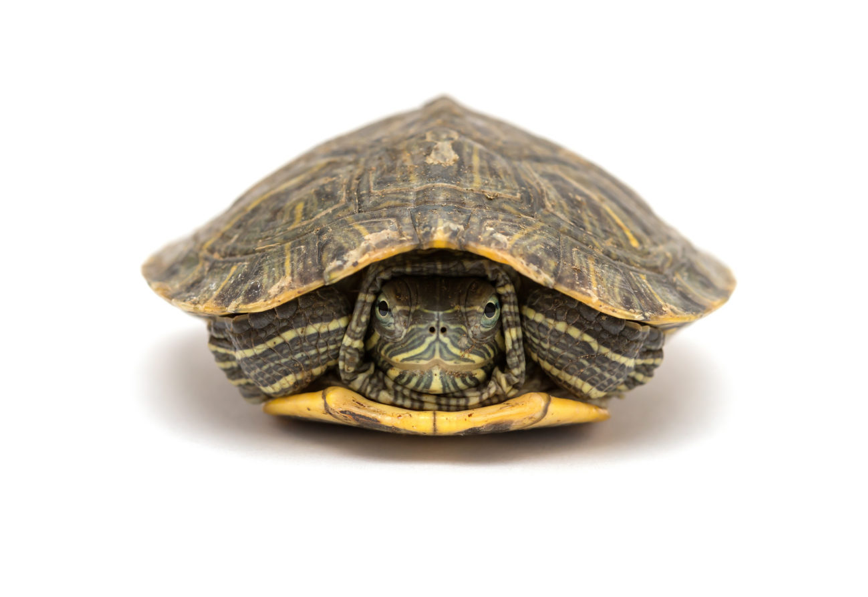
A Turtle In Its Shell
Green sea turtles have an amazing ability to hold their breath. This allows them to stay underwater for up to five hours at a time before needing to surface for air. Even with this ability, they do not dive for more than five minutes at a time when feeding. Being able to stay underwater for that long comes from the turtles’ ability to slow their heart rate. By doing this, up to nine minutes pass between heart beats, which allows for oxygen conservation.
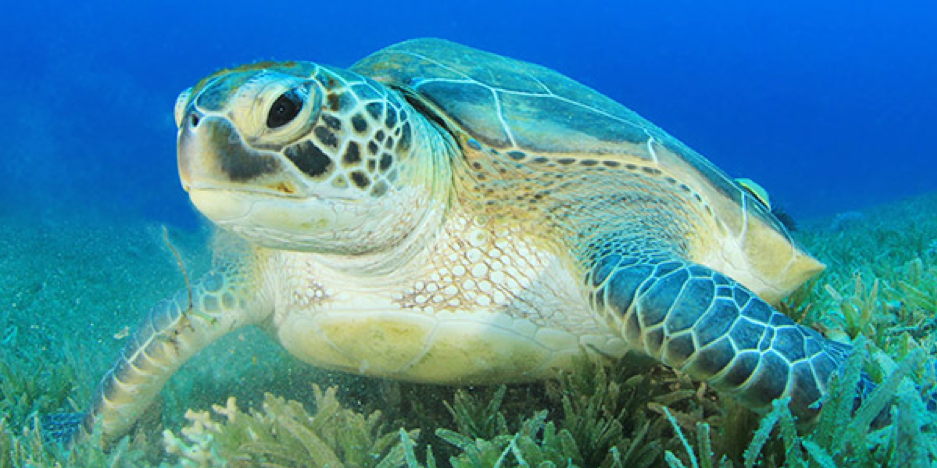
Sea Turtle
Many people see turtles and tortoises as ideal pets. However, there are many arguments against adopting them as such. The first is the lifespan of a turtle. Considering human life expectancy versus turtle life expectancy, the commitment needed may not be possible. Second, the care they need is very specific and sometimes very expensive. Finally, salmonella bacteria are present in turtles. These bacteria can cause medical troubles that can even put your life at risk. Generally, turtles belong in the wild and not in homes.
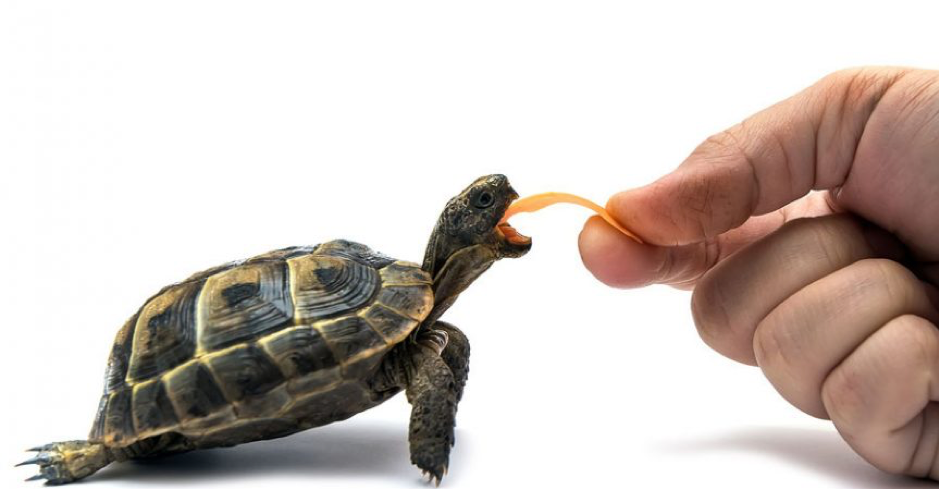
A Turtle Being Fed







